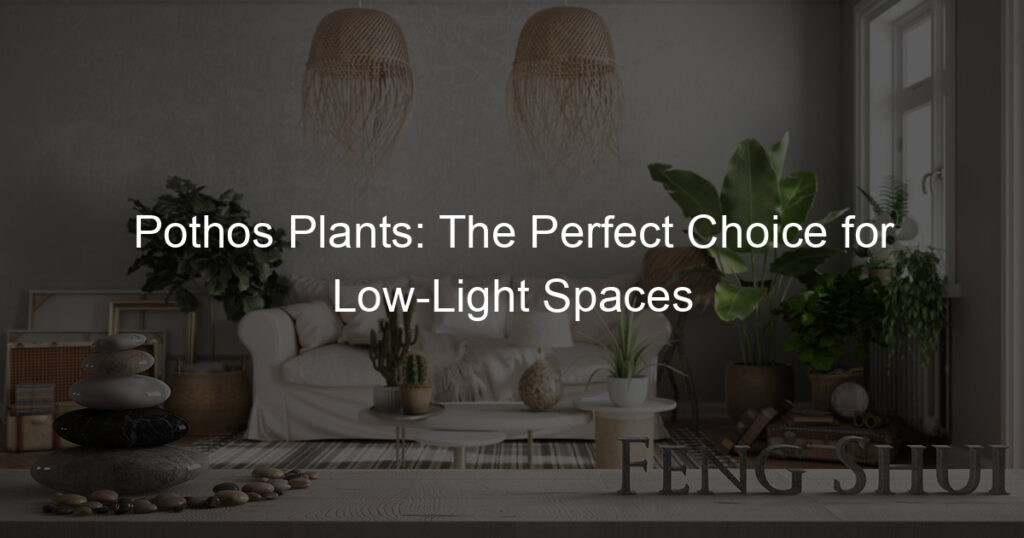If you’re looking for the perfect houseplant to bring life and greenery into your home, then look no further than pothos plants. Perfect for both novice gardeners and seasoned plant lovers alike, these resilient and versatile plants can thrive in nearly any environment—including those that lack natural sunlight.
With its heart-shaped leaves of varying sizes and colors, pothos adds a unique visual interest to any room’s corner or mantle as it grows to reach up to 8 feet tall! Growing a beautiful pothos plant is easier than ever with the right advice — read on to find out why this hardy green gem may be the perfect choice for your low-light space.
Which pothos is best for low light?
The one pothos that stands out for its ability to thrive in low light is the ‘Marble Queen.’ This variety is especially tolerant of low light and will still put on impressive displays of heart-shaped leaves variegated with shades of yellow, green, and white. While it can also survive bright light conditions, it may not necessarily grow as quickly if exposed to too much.
To ensure a healthy and thriving ‘Marble Queen’, find an area with indirect light or an east window. With little maintenance, you’ll be rewarded with a beautiful cascading plant that’s an eye-catching piece in your home.
Can pothos survive in a dark room?
Pothos, which are also commonly known by their original Latin name Epipremnum aureum, are resilient and hardy plants that thrive in low light conditions. But can these leafy green lovelies really survive in a dark room?
The simple answer is yes! While pothos certainly requires more light than what a totally dark room could provide, they will fare better than many other houseplants in an environment with limited sun exposure.
This versatile plant will still be able to photosynthesize using any available light sources such as window sills or artificial lighting, making it a great choice for houses with little natural sunlight.
Which is better for low light philodendron or pothos?
Taking proper care of low-light plants can be tricky, especially in knowing which types of plants also thrive in these conditions. Low-light philodendrons and pothos are two popular options for indoor gardeners seeking to spruce up a room with some green.
They both have attractive, cascading foliage and require minimal care. The biggest difference between the two is that while the philodendron is a climbing vine, the pothos has a more bushy shape and its vines are non-climbing. In terms of light requirements, both prefer bright indirect sunlight but can tolerate low levels as well.
Whichever you choose to bring into your home, it’ll need to be situated away from direct sunlight otherwise the leaves will get dried out due to too much heat and glare. In short, these two are fairly similar when it comes to thriving in low-light situations and either one could be just the piece you’re looking for to add life to your space.
Can pothos grow in full shade?
While pothos plants are known for preferring direct sunlight, they can also grow in lower- or indirect-light areas such as a shady window. When grown in full shade, however, their growth will be very slow and their leaves may become pale due to a lack of adequate photosynthesis.
To achieve optimal health and growth, it’s best to provide pothos with some bright, indirect light but unless you’re in an extremely dark location – it’s possible for your pothos to thrive even with its shade environment. Though the plant won’t reach its full potential without some light exposure, with enough patience and love, you can still enjoy healthy foliage!
Can pothos grow with no light?
It’s a common question among plant enthusiasts – can pothos survive with no light? The answer is not cut and dry, since pothos (Epipremnum aureum) needs some light in order to photosynthesize and stay healthy.
But if you don’t have areas in your home or garden that receive natural sunlight for most of the day, this particular species of houseplant may be just the thing to green up your space. Artificial lighting options like LED grow lights, fluorescent fixtures, and other forms of artificial illumination can replace sunlight, allowing this resilient climber to thrive despite lower-than-optimal lighting conditions.
With proper attention and support, these versatile plants make easy additions to even the darkest corners of the house or apartment.
Summary
If you have a room with minimal lighting, consider adding a pothos plant to your decor. With their long, arching vines and lush green foliage, pothos plants bring life and vibrancy to low-light spaces.
Not only are these plants attractive and resilient, but they are also extremely easy to care for. All that’s needed is occasional watering, misting, soil refreshing every few months, and plenty of love.
Furthermore, if you’re just starting out with houseplants, pothos is an ideal choice because it will continue to thrive even when not cared for perfectly. There’s no doubt that pothos plants provide a bit of beauty in any room and are the perfect choice for anyone wanting to add a touch of green to their low-light space.














